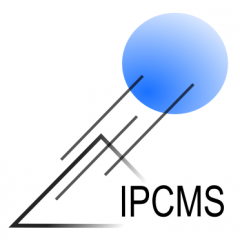
Parcours de recherche
2023 – 2024: Projet de postdoc “La synthèse de nanoparticules combinant différents type d’oxydes métalliques pour la production d’hydrogène via l’électro catalyse de l’eau” – IPCMS-DCMI, Université de Strasbourg
2019 – 2022: Doctorat en chimie “Étude spectroélectrochimique de la réactivité de la cytochrome bd oxydase et des systèmes apparentés avec de petites molécules” – UMR 7140 Chimie de la Matière Complexe, Université de Strasbourg
2017: M2 Stage “Extraction de points de nuages du fludioxonil, du fenarimol et du métalaxyl par des phases de tensioactif non ionique suivie d’une détection par GC”.- Université nationale Taras Shevchenko de Kiev, Ukraine
Parcours universitaire
2022: Docteur en Chimie – Université de Strasbourg
2017: Master en Chimie, spécialité chimie analytique – Université nationale Taras Shevchenko de Kiev, Ukraine
2015: Licence en Chimie – Université nationale Taras Shevchenko de Kiev, Ukraine
Recherches actuelles
La décomposition de l’eau pour la production d’hydrogène est favorisée par de nouveaux électrocatalyseurs efficaces basés sur des nanoparticules cœur-coquille combinant des oxydes de métaux de transition abondants sur terre
Publications
[1] I. Makarchuk et al., ‘Mutating the environment of heme b595 of E. coli cytochrome bd-I oxidase shifts its redox potential by 200 mV without inactivating the enzyme’, Bioelectrochemistry, vol. 151, p. 108379, Jun. 2023, doi: 10.1016/j.bioelechem.2023.108379.
[2] I. Makarchuk et al., ‘pH-dependent kinetics of NO release from E. coli bd-I and bd-II oxidase reveals involvement of Asp/Glu58B’, Biochimica et Biophysica Acta (BBA) – Bioenergetics, vol. 1864, no. 2, p. 148952, Apr. 2023, doi: 10.1016/j.bbabio.2022.148952.
[3] I. Makarchuk, V. Klovak, V. Levchyk, and V. Doroschuk, ‘Cloud point extraction coupled with ultrasonic-assisted back-extraction for the determination of metalaxyl, fludioxonil and fenarimol in fruits by gas chromatography with flame ionization detection’, Chem. Pap., vol. 76, no. 12, pp. 7575–7584, Dec. 2022, doi: 10.1007/s11696-022-02431-6.
[4] F. Melin et al., ‘Design of an electrochemical assay for identification of cytochrome bd oxidases inhibitors’, Biochimica et Biophysica Acta (BBA) – Bioenergetics, vol. 1863, p. 148677, Sep. 2022, doi: 10.1016/j.bbabio.2022.148677.
[5] I. Makarchuk et al., ‘Spectroelectrochemical study of NO binding of cytochrome bd-I and bd-II oxidases from E. coli’, Biochimica et Biophysica Acta (BBA) – Bioenergetics, vol. 1863, p. 148690, Sep. 2022, doi: 10.1016/j.bbabio.2022.148690.
[6] I. Makarchuk et al., ‘Electrocatalytic and Spectroscopic Studies on Cytochrome bd Oxidase, a Highly Diverse Bacterial Defense Factor’, Biochimica et Biophysica Acta (BBA) – Bioenergetics, vol. 1863, p. 148669, Sep. 2022, doi: 10.1016/j.bbabio.2022.148669.
[7] J. Kägi, I. Makarchuk, D. Wohlwend, F. Melin, T. Friedrich, and P. Hellwig, ‘E. coli cytochrome bd-I requires Asp58 in the CydB subunit for catalytic activity’, FEBS Letters, vol. 596, no. 18, pp. 2418–2424, 2022, doi: 10.1002/1873-3468.14482.
[8] I. Makarchuk, A. F. Santos Seica, F. Melin, and P. Hellwig, ‘Probing the reaction of membrane proteins via infrared spectroscopies, plasmonics, and electrochemistry’, Current Opinion in Electrochemistry, vol. 30, p. 100770, Dec. 2021, doi: 10.1016/j.coelec.2021.100770.
[9] A. Grauel et al., ‘Structure of Escherichia coli cytochrome bd-II type oxidase with bound aurachin D’, Nat Commun, vol. 12, no. 1, Art. no. 1, Nov. 2021, doi: 10.1038/s41467-021-26835-2.
[10] I. Makarchuk et al., ‘The Inhibition Study of Cytochrome bd Oxidase Using the Enzyme-Based Electrochemical Sensor’, Chemistry Proceedings, vol. 5, no. 1, Art. no. 1, 2021, doi: 10.3390/CSAC2021-10555.
[11] A. Nikolaev et al., ‘Stabilization of the Highly Hydrophobic Membrane Protein, Cytochrome bd Oxidase, on Metallic Surfaces for Direct Electrochemical Studies’, Molecules, vol. 25, no. 14, Art. no. 14, Jan. 2020, doi: 10.3390/molecules25143240.
